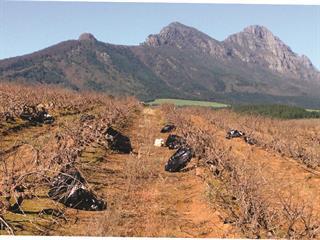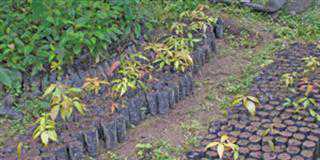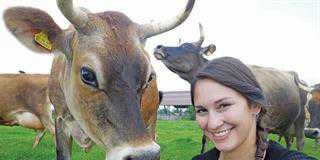
In an attempt to learn more about what determines the character of some of the oldest Pinotage vines in South Africa and to capture these characteristics before the old vines die, Johan Burger, Professor of Molecular Genetics at Stellenbosch University, has embarked upon a project to map the genome of these vines.
Bred in 1925 as a cross between Pinot noir and Cinsaut by Abraham Izak Perold, the first Professor of Viticulture at Stellenbosch University, Pinotage developed into South Africa’s signature wine cultivar over the years. Today, Pinotage wines are made in a number of other countries.
According to Prof Burger, in 2007 Pinot noir became the first variety to have its genome mapped. Now similar research is being carried out on other wine cultivars and fruit species in different parts of the world.
The aim of the project is to:
- Obtain a genetic blueprint of the Pinotage cultivar by unravelling its genome;
- Determine the gene sequences in the vine;
- Do epigenetic sequencing to understand how environmental factors influence and modify the Pinotage vine as it matures. This will help winemakers understand more about how old vines develop character.
RESEARCH METHOD
Burger is assisted by PhD student Beatrix Coetzee. In collaboration with Paul Krige, co-owner of the Kanonkop Estate, they took plant material samples of the original 60-year-old Pinotage vines as well as samples of younger vines from the same vineyard block cloned six years ago.
As a first step to determining the genome of Pinotage, Burger and Coetzee then extracted DNA from the samples after the bark had been stripped off. A genome consists of millions and sometimes billions of nucleotide bases, which can be one of four types – A, C, G or T.
“The genome of a vine cultivar consists of approximately 500 million bases,” explains Burger. “It’s like one long molecule or a big puzzle. We use ultrasound to scatter it into small fragments to determine the genome. “This will be done at the Biotechnology Platform of the Agricultural Research Council in Pretoria. Once we receive the data with millions of pieces of information back from them, we’ll filter it for quality control.
“Then Beatrix will go to the University of Verona in Italy, which will help her conduct the genome assembly and gene annotation.” Annotation is the process to identify genes that have specific functions, such as those that determine the colour of Pinotage.
BLUEPRINT
Burger is confident that they will publish the genome of the 60- and cloned six-year-old Pinotage vines next year.
“Once one has established the genetic code of any living organism, it provides a genetic blueprint from which an awful lot can be learnt if one wants to understand and use the organism,” he says.
In Phase 2 of the project, the researchers aim to find virus sequences in the Pinotage genome. The leaf-roll virus, for example, can have devastating economic consequences in vineyards if it is not contained by using the best possible plant material and management practices.
CHEMICAL CHANGES
Phase 3 will be to establish the epigenome of the old and young Pinotage vines sampled for the research. An epigenome consists of a record of the evolutionary chemical changes to the DNA and proteins of an organism.
“We’d also like to establish how the micro-biomes of old and younger vines differ,” says Burger. “There should be differences because viruses mutate rapidly. Ultimately, we’ll be able to learn more about Pinotage’s viral, fungal and bacterial diversity and whether vines can be modified to obtain the sought-after character shown by old vines.”
Phone Prof Johan Burger on 021 808 5858 or email him at [email protected][email protected]













